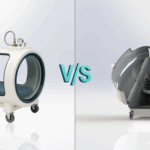Hypertension, commonly referred to as “high blood pressure” or HTN, is a medical condition in which the blood pressure is chronically elevated. While it is formally called arterial hypertension, the word “hypertension” without a qualifier usually refers to arterial hypertension. Hypertension can be classified as either primary or secondary. Primary hyper- tension indicates that no specific medical cause can be found to explain a patient’s condition.
Secondary hypertension indicates that the high blood pressure is a result of another condition, such as kidney disease or certain tumours (especially of the adrenal gland). Persistent hypertension is one of the risk factors for strokes, heart attacks, heart failure and arterial aneurysm, and is a leading cause of chronic renal failure. Even moderate elevation of arterial blood pressure leads to shortened life expectancy. At severely high pressures, mean arterial pressures 50% or more above average, a person can expect to live no more than a few years unless appropriately treated.
Hypertension is considered to be present when a person’s systolic blood pressure is consistently 140 mmHg or greater, and/or their diastolic blood pressure is consistently 90 mmHg or greater. New studies show that blood pressure that is between 120/80 mmHg and 139/89 mmHg indicates “prehypertension.“. Pre-hypertension is not a disease category; rather, it is a designation chosen to identify individuals at high risk of developing hypertension.
The Mayo Clinic website specifies blood pressure is “normal if it’s below 120/80” but that “some data indicate that 115/75 mmHg should be the gold standard.” In patients with diabetes, mellitus or kidney disease studies have shown that blood pressure over 130/80 mmHg should be considered high and warrants further treatment. Even lower numbers are considered diagnostic using home blood pressure monitoring devices.
Hypertension is usually found incidentally – “case finding” – by healthcare professionals during a routine checkup. The only test for hypertension is through blood pressure measurement. Hypertension in isolation usually produces no symptoms although some people report headaches, fatigue, dizziness, blurred vision, facial flushing or tinnitus.
Malignant hypertension (or accelerated hyper- tension) is distinct as a late phase in the condition, and may present with headaches, blurred vision and end-organ damage.
Hypertension is often confused with mental tension, stress and anxiety. While chronic anxiety and/or irritability is associated with poor outcomes in people with hypertension, it alone does not cause it. Accelerated hypertension is associated with drowsiness, confusion, visual disturbances, nausea and vomiting (hypertensive encephalopathy).
Ozone Therapy can help prevent, or in advanced cases help fight the symptoms of hypertension. Ozone increases the red blood cell’s capacity to carry oxygen, breaks down cholesterol, improves blood circulation, helps strengthen arterial walls and reduce headaches, nausea, diarrhoea and fatigue. Ozone can help improve your overall health. Click to view our 100 Benefits of Ozone Therapy.
Ozone Therapy can be enjoyed from home, or you can book a session at one of our affiliated outlets or you can add an Ozone Sauna to your own clinic.
For more info do not hesitate to contact us:
Salvagente
+27 (0)72 4221967
Sign up for our blog and newsletters to receive more information regarding various conditions and how ozone therapy can assist in treating it.
[contact-form][contact-field label=’Name’ type=’text’/][contact-field label=’Email’ type=’text’/][/contact-form]







Leave a Reply